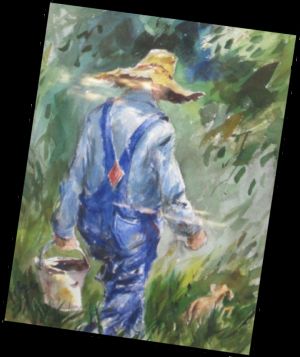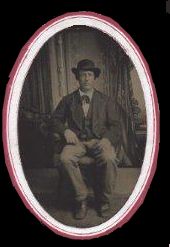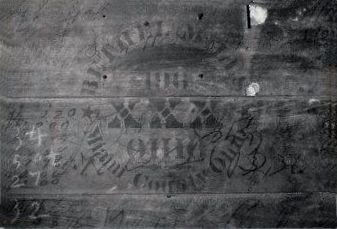"The History of every land begins in the heart of a man or woman"
'Oh Pioneers
 My family, the Staleys
originated at Staley Bridge, England and having gotten on the wrong side of English religion and
politics, fled to the North Sea then to Holland to save their lives. They lived in Holland and
inter-married with the Dutch for some 200 or 300 years. In the mid 1700's the family chartered
a ship and migrated to America, coming up the Chesapeake Bay and the Potomac River to the head of
navigation around Harpers Ferry, Virginia. There they disembarked; some of the family settled
around Fredericksburg, Maryland, some in Virginia and others migrating on up into Pennsylvania and
later on as the West opened up and developed, they moved Westward and grew up with the country. My family, the Staleys
originated at Staley Bridge, England and having gotten on the wrong side of English religion and
politics, fled to the North Sea then to Holland to save their lives. They lived in Holland and
inter-married with the Dutch for some 200 or 300 years. In the mid 1700's the family chartered
a ship and migrated to America, coming up the Chesapeake Bay and the Potomac River to the head of
navigation around Harpers Ferry, Virginia. There they disembarked; some of the family settled
around Fredericksburg, Maryland, some in Virginia and others migrating on up into Pennsylvania and
later on as the West opened up and developed, they moved Westward and grew up with the country.
My great, great, great, great grandparents, Joseph and Julianne Staley settled in Lancaster, Pennsylvania
and produced 16 children, of which David, Henry and Elias traveled to the Northwest Territory, the
Ohio country being a part of that wilderness. The three brothers were fine millwrights by trade and
built several grist mills in Greene, Montgomery and Miami County. Elias was also a distiller and
owned several distilleries before coming to the northwestern part of Bethel Township, Miami County to build a
grist mill and mill races for John Rench along Indian Creek. Elias purchased the 160 acre tract after building the
grist mill in 1818 for Rench. He married Hannah Retter who was from Frederick, Maryland in 1826,
and before he brought his bride to her new home, built a brick Federal house, a fruit kiln,
sawmill, distillery and bondhouse, and eventually a Pennsylvania bank barn that replaced a log structure
in 1857. This type of farmstead today is called a PIONEER AGRICULTURAL/ INDUSTRIAL COMPLEX and is rare
indeed, being possibly the only one still in existence and owned by the same family in the United States.
Seven children were born to Elias and Hannah and all have left their mark on our family farm as each
new generation replaced the old.


 The GRISTMILL with two 11 foot overshot water
wheels continued to grind grain into flour until the early 1900's - it is still standing with all the
original equipment from 1818 (steam power was used in the late 1800's, but the Staley's strong resistance
to change resulted in the refusal to upgrade to the more current "Roller Mill," thus we have an unrivaled
glimpse into the operation of a pre-Civil War water powered process). The GRISTMILL with two 11 foot overshot water
wheels continued to grind grain into flour until the early 1900's - it is still standing with all the
original equipment from 1818 (steam power was used in the late 1800's, but the Staley's strong resistance
to change resulted in the refusal to upgrade to the more current "Roller Mill," thus we have an unrivaled
glimpse into the operation of a pre-Civil War water powered process).
The DISTILLERY produced double copper distilled rye whiskey and operated day and night until the
middle of the Civil War when a tax was placed on whiskey and Elias ceased operation of the stills in protest.
After his father's death in 1866, Andrew fired up the stills once again and in the 1880's increased
production and added two new buildings... a mash house and a warehouse for the whiskey. Andrew also
increased the size of the gristmill, expanding upward and outward in size to accommodate the
whiskey production. The original distillery was brick and is no longer standing. The warehouse and
mash house are intact. Whiskey production ended with Prohibition in 1920.
The SAWMILL that remains today was built in 1820 and is the third sawmill built on the farm. My
great-grandfather sawed logs on it and the last log sawn is still on the carriage. In its heyday,
it employed 4 men and was a constant "wage-earner" for the family for almost 150 years. It is the
only original vertical water-powered sawmill in the state of Ohio and the Flutter wheel is probably
the sole survivor in the United States today.
The HOUSE, our home, befits the home of a master-craftsman as Elias designed a large house for
family and workers alike. Original in paint and structure (my grandmother built an addition in
1976) the house is a living example of early American architecture and personal pride.
By the turn of the 19th century, my family's old farmstead was already "old landmarks of the county"
and is listed on the NATIONAL REGISTER OF HISTORIC PLACES. And so now, my husband Joe and I add to
and bring back a piece of the rich heritage of the farm with the construction of a new distillery
where the past meets the present with old ways and new endeavors. Six generations later the
Staley Farm is a living monument to the past where...
HISTORY IS ALIVE AND WELL... |

